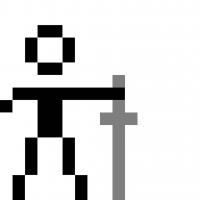It's worth defining what “really long” means in this context. Standing at sea level the horizon is about 5km away. The longest possible sight-line on earth (mountain-top to mountain-top) is about 500km.
The easiest approach to the appearance of a massive draw distance is to render two things: a mesh terrain up close, and any distant mountains baked into the skybox. With fairly simple LOD handling you can push the mesh terrain out to a few kilometres, and as long as the user isn't travelling at aircraft speeds, there won't be appreciable parallax with the backdrop.







